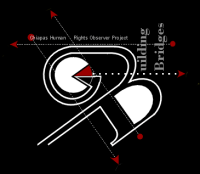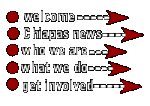

The Building Bridges in Chiapas Human Rights Observer Project
A Month in New Jerusalem
Observer Report from Tom Feakins

A few minutes south-east of Ocosingo sits the tiny community of Nuevo Jerusalen, our destination and home for the month of March 2000. Similar to Francisco Gomez, where I stayed 2 yrs before, New Jerusalem rests next to a military base, this time the sprawling 39th cuartel, home to over a thousand soldiers whose main task is to patrol the area in efforts to monitor the Zapatistas. A more subtle effect is "psychological" warfare by harassing villagers, entering homes and preventing residents from working their fields, among other things.
As I did in 1998, we traveled from San Cristobal de las Casas in the wee hours of the morning to avoid immigration checkpoints and any other unnecessary eyes. Magdalena, Cesar and I arrived in time to see a stunning sunrise over the Lacandona jungle and the first glimpse of a hamlet shrouded in equal parts fog and mystery.
The community of New Jerusalem began in 1994, shortly after the now famous uprising in January, as a few large families settled on a fertile strip of land that was previously held by a rancher. The "responsable" (community leader) explained that the land-owner had fled for fear of losing the land to Zapatistas, selling his parcel to the government before leaving. As New Jerusalem and other communities grew in the Ocosingo area, so did the need for a greater military presence, so 1997 saw the birth of the 39th cuartel, about 15 metres from the entrance to our destination, literally across the road. Since that time the constant intimidation and threats from soldiers caused the community members to come together in Dec 99 and request some international assistance. Observers first arrived in February of this year, and since that the time there have been no reports of military personnel in the community, although the constant patrolling along the main road and in the air continues.
The residents of New Jerusalem speak mainly the Mayan dialect of Tzeltal, and live by subsistence farming of corn, beans, coffee, and bananas. We experienced an amazing level of openness within the community, often being invited into homes, listening to the individual stories of children, as well as adults, and joining in various renditions of the Himno Zapatista. Of course we were not part of the community, and a necessary separation was realized by most, paying close attention to observer guidelines and community standards.
Our days were spent walking the perimeter of the community, ensuring that we were well within view of our camouflaged friends across the street, documenting any military movement outside the village, and listening to "denunciations" or reports of other activity, whether paramilitary or from nearby divided communities. Our normally mundane tasks of preparing meals, cleaning, and visiting the bathroom were transformed into near-sacred rituals, often with scores of beautiful children laughing in our shadows. Evenings were spent reading by candle light or visiting on the hill with local men, but our afternoon games of basketball, murderball (don't worry, it was styrofoam) and capture the flag were a daily thrill for both observers and children.
In my discussions with residents, catechists, a visiting doctor, and others, it became clear that although the community breathed a collective sigh of relief when we arrived, a much deeper feeling of anxiety was everpresent among people, as their struggle for land, recognition and self-preservation lurched forward, then backward. Nearby communities, including Balaxte have begun to divide as the Chiapanecan members look for concrete signs of change, years into the "official" struggle. Of course the recent Mexican election results both federally and in Chiapas will likely energize the struggle and, hopefully, the political will to see it realized. In the meantime, these strictly Catholic people worship and pray to a God who, I was told, somehow allows the hardship, yet provides a measure of solidarity far beyond what I could understand. Oh, I was also informed that the Mormons arrived last year and lasted nearly half an hour before realizing that the residents were not as ripe as they had thought.
With very little work in the region, and even less access to social services, we saw the effects of malnutrition in New Jerusalem. A diet of coffee and sugar, and tortillas and beans produced children much smaller than normal height and weight, and prone to various gastrointestinal disorders, in a state ironically rich in natural resources. Clean water was unavailable in the village, but Coca Cola and Fanta were stocked on the shelves in the co-operative tienda for those whose pesos could reach that high. As the weeks passed I half-expected to see the familiar sight of Golden Arches rise from the soil next to the 39th cuartel, but that hasn't happened yet.
We left the community as we arrived: in darkness, tired and packed into a volkswagen bus built for 17. There are, of course, some rich memories that have not begun to fade: a couple of sweaty moments with immigration officials and military, being joined in a breakfast-time performance of Frank Sinatra (I Get a Kick Out of You) by 2 young girls, a Spanish/Tzeltal discussion of a Dostoyevsky biography, and the sense that I have been a witness to something that will continue to teach and inspire.
Click here to return to Building Bridges Getting Involved.